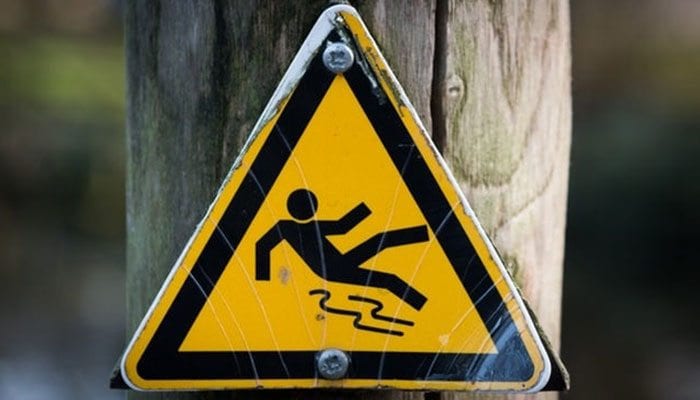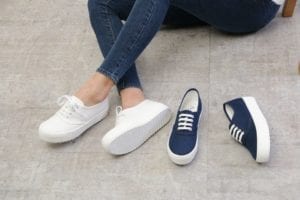How Do Slip Resistant Shoes Work?

Having non-slip shoes is very important if you work in environments that have wet or oily floors. They are just as important for hikers, joggers, runners and all other manner of sports and outdoor activities. Getting the right pair of non-slip shoes will ensure that you minimise the risk of accidents when you are out and about.
What is the Meaning of Slip Resistant?
 The term slip resistant refers to either shoes or surfaces that are designed to offer you protection from slipping, no matter what may be found on those surfaces such as water or grease. It will not guarantee that you will not slip, but it will make it less apt to happen.
The term slip resistant refers to either shoes or surfaces that are designed to offer you protection from slipping, no matter what may be found on those surfaces such as water or grease. It will not guarantee that you will not slip, but it will make it less apt to happen.
Slip resistant shoes are shoes that are designed with soles that have rubberized soles as well as great tread patters. These two factors are what are there to afford you a better grip when walking, running or working on slippery surfaces.
Rubber, PVC, and PU are the most common compounds used to make the soles of these shoes, rubber being the best as it has the better slip resistant attributes as compared to other materials. If you have soft rubber soles with very intricate and fine tread, you have the perfect non-slip shoe. Non-slip shoes do not have to have thick soles in order to be non-slip, the tread and type of material used are what make the shoes slip resistant and not the thickness of the sole.
Difference Between Non-slip and Slip Resistant
There is no real difference between non-slip and slip resistant shoes. Both are designed to assist people when walking or running, or even working on different types of slippery surfaces from slipping and falling. The phrases non-slip and slip resistant are often used in the same context.
Although one manufacturer will label their shoes as non-slip another will label that same shoe as slip-resistant. The important thing to remember is that both of these types of shoes have specifically designed soles with great traction to help prevent you from slipping.
What is Considered a non-slip Shoe?
Any shoe that gives you great traction is considered non-slip. Shoes that have a better traction than others are those that have deep tread grooves which provide for better friction between you and the ground. They are also made from a softer material that allows you to “grip” the ground as you walk. The deeper the tread, the more slip resistant the shoes.
The tread on the shoe allows the water to move away from the base or sole of your shoe, making it less likely for you to slip than if you were wearing a flat soled shoe with little or no tread on them. These soles are often made out of high-grade rubber, which provides solid, strong traction and is proven in its efficiency as a non-slip sole.
The shape of the tread on the outsole of your shoe can also have an influence on the grip of the shoe, especially if you are going to be walking on either oily or wet floor. If you have a look at the bottom of slip-resistant or non-slip shoes you will see that they offer round, or circularly designed patterns or multiple designs.
This allows the sole to have more grip especially if you are walking on slippery, wet, greasy or oily floors. Many work shoes, as well as trail and running shoes, have thick soles with deep treads that are multi-patterned. The reason for this is that when you are hiking, running or working in certain environments, you will be exposed to surfaces that are greasy, oily or wet, and sometimes even muddy.
You will need the traction provided to reduce the possibility of an accident when slipping on such surfaces. Just remember if you are hiking in a muddy environment, you will need to clean out the mud between the traction on your shoe to ensure that you retain its non-slip quality.
What is the Difference Between Skid and Slip-resistant Shoes?
The difference between these two types of shoes is negligible if there are any at all. There is no defining difference between the two types of shoes and many manufacturers will call their shoes skid resistant while other slip resistant. The defining factor of these types of shoes is that both will help to prevent you from slipping on wet or oily surfaces.
Both are rated by a dry static coefficient, which is the ratio of the force of friction between two objects, in this case, the ground and the sole of your foot, and the force that presses them together. The material that is used is soft rubber that is able to “grab” the surface that you are standing or walking on.
This material, along with their tread patterns, is what make them resistant to you slipping or skidding on wet, oily surfaces. The material used to make the heel and sole of a shoe is the key factor in how well a shoe will perform. Heels and soles made of softer materials are better able to “grab” the surface on which you walk or stand, making them more resistant to slipping and skidding.
Most testing of shoes is performed on clean dry surfaces, so take that into account when choosing a safety shoe. The employer’s requirements, recommendations, and internal safety program should guide the ultimate choice of a safety shoe.
Conclusion
Having slip resistant or non-slip shoes are a necessity in some workspaces as well as for anybody who regularly walks, runs or works on surfaces that get wet, oily and slippery. Having the correct shoes, that are skid and slip resistant, can help prevent nasty accidents from slipping or skidding.